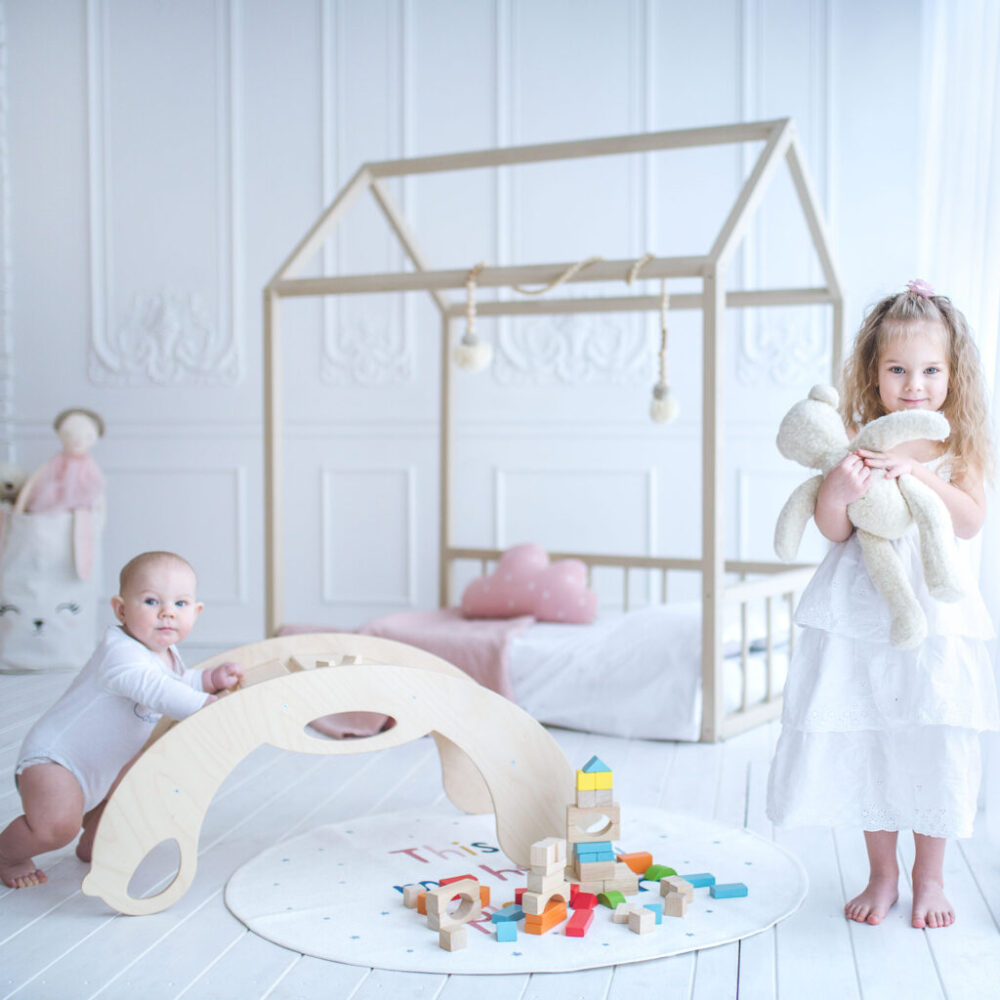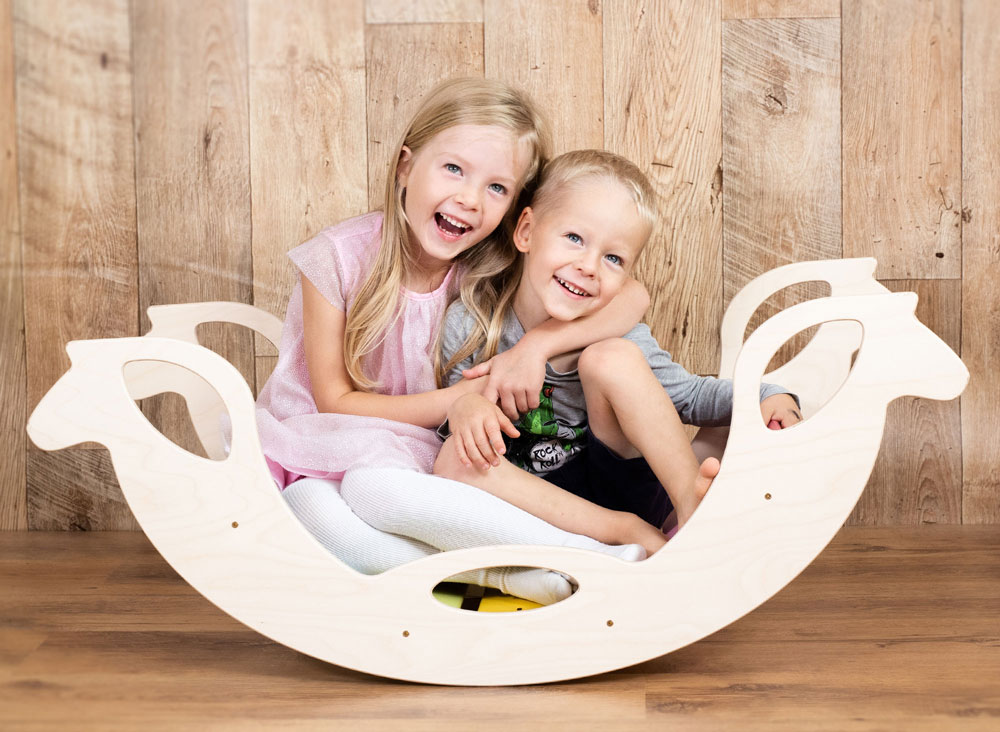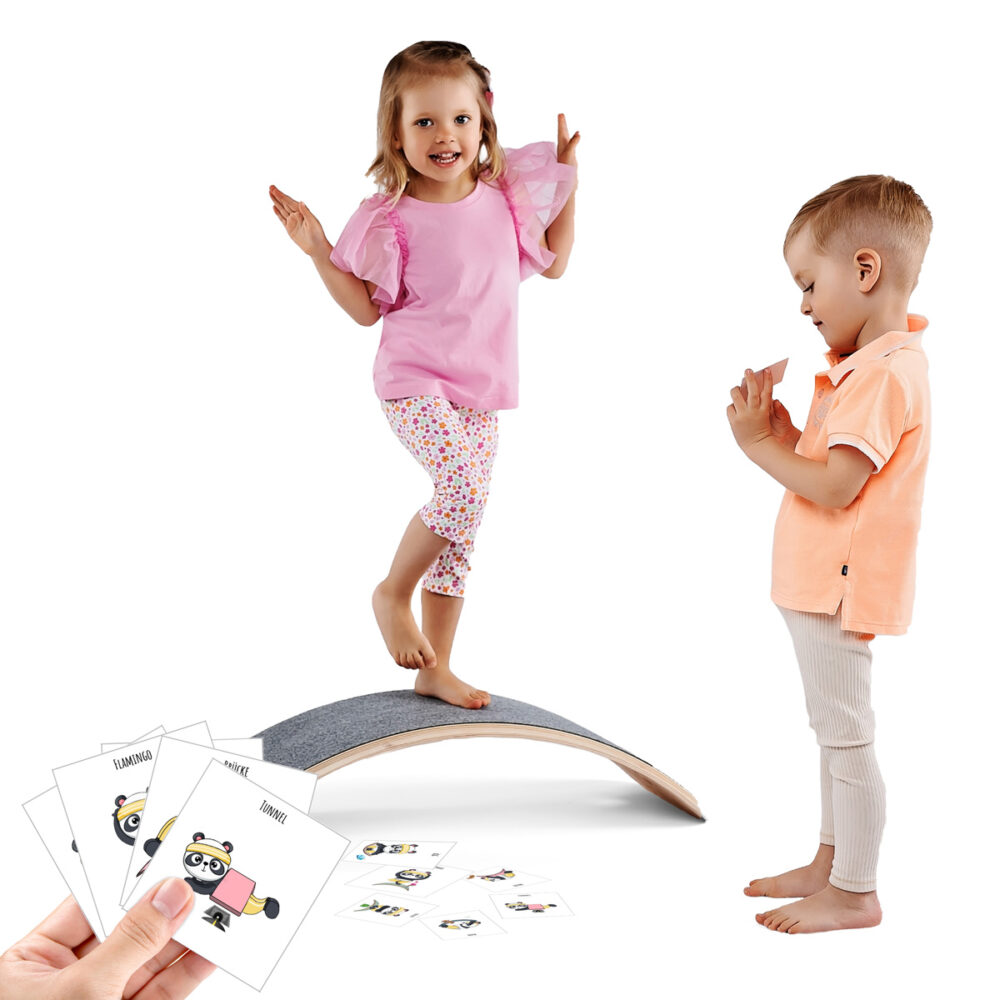Children’s curiosity and imagination–the most wonderful of gifts–are stimulated by a nurturing environment, which plays an essential role in shaping their perceptions. An environment that encourages safe exploration keeps their natural inquisitiveness high and equips them with self-confidence from a young age.
You don’t want to spend all day helicopter-parenting your kid to ensure they don’t put something toxic in their mouth, touch a sharp object or climb something dangerous. Instead of stressing over little things and redirecting your child every 5 minutes, invest that time into creating a safe yet stimulating environment. Give them the chance to explore freely in a baby-proof space.
Creating a Montessori-inspired bedroom would keep all your concerns at bay while allowing your little explorer to play freely. Let’s dive a bit more into this concept.
What is a Montessori bedroom?
Maria Montessori, the creator of the Montessori method, said that “we must give the child an environment that he can utilize by himself: a little washstand of his own, a bureau with drawers he can open, objects of common use that he can operate, a small bed in which he can sleep at night under an attractive blanket he can fold and spread by himself. We must give him an environment in which he can live and play; then, we will see him work all day with his hands and wait impatiently to undress and lay down on his own bed.”
In fewer words, a Montessori bedroom is organized to make sure everything is within the child’s reach and put there to cater to their needs, with little to no adult intervention. It should inspire independence by allowing the child to make their own decisions and play freely, develop motor and cognitive skills through the toys and materials provided, and teach about order through the lack of clutter.
Here are a few rules of thumb for those who intend to create a Montessori-inspired bedroom for their children:
1. Keep everything at child-eye level
The point is to ensure your child can easily access everything. Get down to their height and walk or crawl around the room after organizing it to make sure everything is within reach and there are no dangers. Opt for toddler-sized furniture wherever possible and fix it to the wall to prevent accidents.
2. Remove the crib
This is perhaps the most game-changing element when creating a Montessori bedroom. Improvising a floor-level bed with a comfortable mattress, pillows and a blanket ensures your little one will be able to take a nap, sleep or relax whenever they feel like it – offering a wonderful sense of independence.
3. Keep the décor simple and relaxing
A Montessori-inspired bedroom aims to create a relaxing space that makes your little one feel safe. Consider neutrals and soothing shades like aqua blue or white and encourage your child to pick the wall art. You can also designate a space for them to showcase their creations and put washable paint within reach.
4. Set up stations
Allowing your child to pick their own clothes easily is an excellent way of exercising independence. You could create a toddler-sized “get ready” area with a little mirror if the space allows. Other stations may include a reading nook with a few books within reach and a working station where they can explore their creativity.
5. Declutter and keep the essentials only
Another governing Montessori principle is simplicity. You may be tempted to spoil your little one with all the flashy toys out there, but a recent study suggests that toddlers are happier when they have fewer toys to choose from. The principle of a Montessori space is to allow your child to move freely and explore it on their own terms, instead of filling it with tons of toys and bulky furniture.
For example, our wooden toys are multifunctional, and a single rocking swing can be used as a rocking toy, climbing ladder, tunnel, gate, storage space for toys, slide – the only limit is the imagination. Opting for multipurpose toys improves the child’s cognitive abilities, spatial awareness, coordination, posture, and creative thinking while saving up space.
You can also maintain the novelty and appeal of toys by rotating them when the child no longer seems interested.
The bottom line
We hope these tips helped you understand the concept of a Montessori room better and gave you enough information to start creating it. Setting up a stimulating, Montessori-inspired environment for your little one is all about creating a simple, safe space that encourages them to learn through play.










